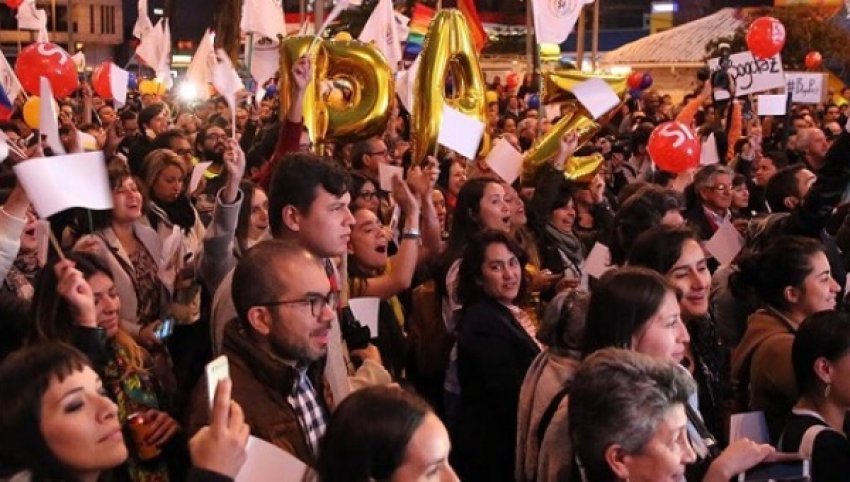
A groundbreaking peace deal has been signed between the government and left-wing Revolutionary Armed forces of Colombia (FARC) rebels. But while the more than 50-year-long war is finally over, difficult times still lay ahead to fully realise the promise of peace in the South American nation.
The nearly four-year peace process in Havana, Cuba, between the 52-year-old FARC and the government of President Juan Manuel Santos achieved a landmark deal including agreements on six key issues: agrarian reform, political participation, disarmament and reincorporation of former combatants, illicit drugs, victims' rights, and implementation of the end of the war. (See five key points below)
From Havana, the government's chief negotiator Humberto de la Calle declared the war over on August 23. However, the same day, FARC leader Ivan Marquez stressed that the peace deal was not the end, but the start of an ongoing process of building stable and lasting peace.
And while Colombians are celebrating the unprecedented achievement of ending Latin America's longest war, many are pointing to the real challenges that lie ahead.
One issue that has not been part of the talks in Havana, but many, including the FARC, have frequently stressed as a key part of building peace is the question of ending hostilities between the government and the country's smaller left-wing guerrilla force, the National Liberation Army (ELN).
Former ELN commander Carlos Velandia, alias Felipe Torres, applauded the announcement of the deal, heralding it as a “new era” that could give a “peaceful” push to “other conflicts” to follow a similar path.
Talks between the ELN and the government have stalled, though the rebel army has said it is open to start a process. Ecuadorean President Rafael Correa has offered to host the process, playing the role that Cuba played in the negotiations with the FARC since 2012.
On August 24, Marquez reiterated the importance of a peace process with the ELN, saying: “We hope that the ELN can find a way to approach [the process] so that the peace that we long for will be completed involving all Colombians.”
Another outstanding question is what will happen to Simon Trinidad, a senior FARC leader jailed in a “supermax” prison in the United States.
Trinidad was extradited to the US in 2004 on charges of drug trafficking and money laundering under the watch of former far-right President Alvaro Uribe, who opposes the new peace deal.
Leaked cables have shown his extradition request was concocted, as the US did not have any pending charges against the high-ranking FARC leader. Trinidad is now serving a 60-year sentence in solitary confinement.
The FARC has long argued that freedom for Trinidad is a cornerstone in securing peace and reintegrating demobilised rebels into society. On August 24, Marquez singled out the US for its role in perpetuating the war. He indicated that Trinidad is still on the movement's agenda, even though negotiations in Havana have ended.
“To the government of the United States, which for so long supported the state war against the guerrillas and against social non-conformity, we ask that you continue backing in a transparent way the Colombian efforts to restore peace,” he said. “We await Simon Trinidad.”
Ahead of the much-anticipated announcement of the final deal, FARC negotiator Jesus Santrich wrote on his Twitter account on August 23: “I recall that the FARC designated Simon Trinidad as the coordinator of the process of laying down of arms.”
However, the 297-page final agreement makes no mention of Trinidad.
The historic deal is set to be put to a vote on October 2 to ratify the agreement with Colombian society by asking voters whether or not they accept the peace accords with the FARC.
[Abridged from TeleSUR English (archived by Internet Archive).]
Five key points in Colombia's peace deal
After the historic announcement on August 24 that negotiations have concluded in the Colombian peace process between the Colombian government and the left-wing Revolutionary Armed Forces of Colombia (FARC), here are the five key points that have been agreed on.
* * *
1. End of violence
A bilateral cease-fire has been signed, which agreed that FARC guerrillas will hand in all weapons to the United Nations.
2. Protection of victims' rights
There have been more than 220,000 victims in Colombia's five-decade-long conflict, and more than 6 million internally displaced. According to the agreement, a Peace Tribunal will be set up to ensure their right to justice, truth, and to ensure that the war is never repeated.
This point has been referred to as “transitional justice”. According to Colombian President Juan Manuel Santos, “there will be no impunity”.
3. Land restitution
Violence has been rife in the Colombian countryside. This point sets up a fund for land to be distributed to those displaced by the conflict.
4. Reintegration of FARC
For peace to be sustainable, armed members of the FARC will be reintegrated into society, and the FARC will become a political movement that will participate in elections in 2018. Beforehand, non-voting representatives will be immediately incorporated into Colombia's House of Representatives.
5. Combating narco-trafficking
Both the government and the FARC have agreed to cooperate in efforts to eradicate drug trafficking, which has played a role in fuelling the conflict.
[Reprinted from TeleSUR English.]